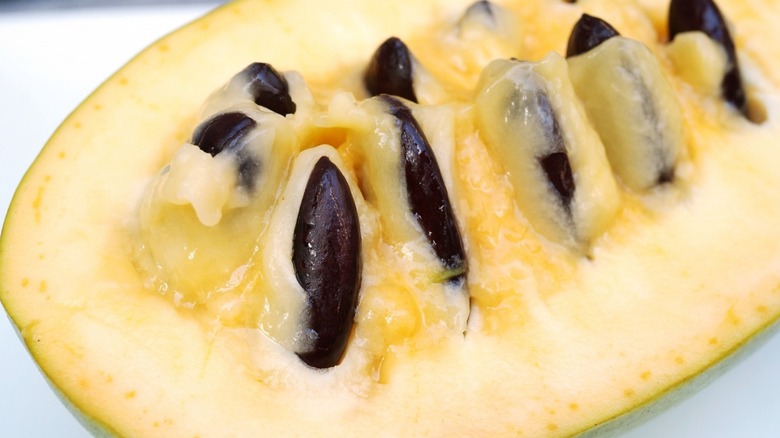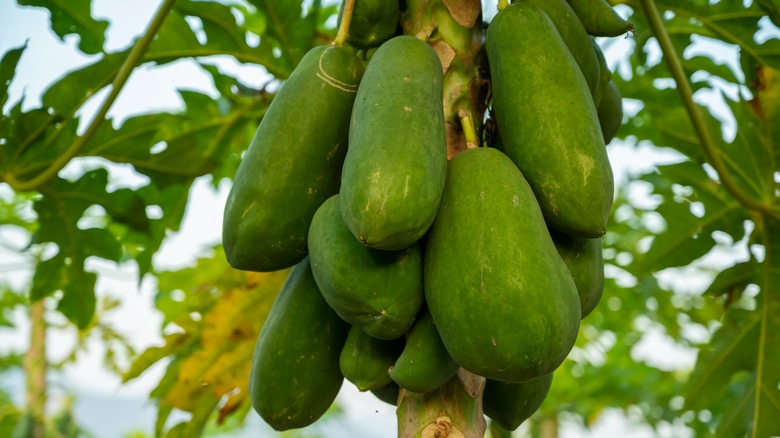The Real Reason It's So Hard To Buy Pawpaw Fruit
The pawpaw is one weird fruit. Native to North America, it's the only member of its family (the Annonaceae, aka the "Custard Apple", per Foodprint) that thrives in non-tropical climates. This fact has spawned fascinating speculation as to how it got here, and just how long pawpaws have been around (spoiler: probably through the activities of now-extinct species, per The Crimson).
The pawpaw's name itself seems to derive from the Spanish word papaya (per Foodprint), which it resembles, but its scientific name hearkens back to its Native American origins: the Asimina triloba was known as the "Assimina" to the Powhatan tribe.
While apple and pear trees were brought to this country from Europe, and require active cultivation, pawpaw trees often grow well in the wild, and are known to have sustained a number of early American populations through times of scarcity. Pawpaw references abound in early American literature and history (via Historic Fairhill).
Pawpaws thrive in areas with hot summers and cold winters (per Cornell's Small Farms), and are remarkably resistant to disease and insects — which gives them a distinct advantage over many of their counterparts. Kentucky State University has launched a major initiative to better understand the pawpaw and improve its cultivars in an effort to produce a more marketable fruit (via Small Farms).
So why is the pawpaw so elusive?
Local, but high maintenance fruit
Why can't you buy pawpaws in most stores? The answer lies in the nature of the fruit itself, which is very much at cross purposes with modern markets and produce distribution.
The pawpaw itself has an unusual flavor, sometimes described as a cross between a banana and a mango (per Food & Wine). It's unfamiliar enough to generations of Americans that it doesn't yet have a major fan base, so demand is still at the low end of the spectrum.
But the greatest challenges stem from issues around ripeness and storage (per The Atlantic). They bruise easily, so they are generally picked by hand and must be stored carefully. Not only that, but ripe pawpaws turn to mush in a matter of days, so there's a small window of opportunity (though, fortunately, refrigeration does help preserve their longevity).
A farmer who works with Weaver's Way (a Philadelphia-based food cooperative) explained via Food & Wine that the pawpaw "just doesn't travel well, so it doesn't fit well into our conventional, large-scale agricultural system that ships food across the country, and across the globe."
But there is hope on the horizon: as the local foods movement grows, interest has surged in native, pest-hardy species. Maybe one day pawpaws will join the ranks of avocados and heirloom tomatoes in finding a way to market, and we'll all be picking up pawpaws and putting them in our pockets (via Appalachian History).

